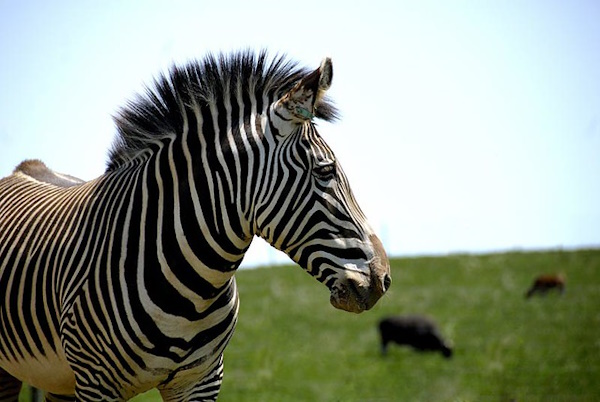Zebras might be known for their “bar code” coats but read between the lines: when it comes to these amazing African equids, not everything is black and white.
Grévy’s Zebra
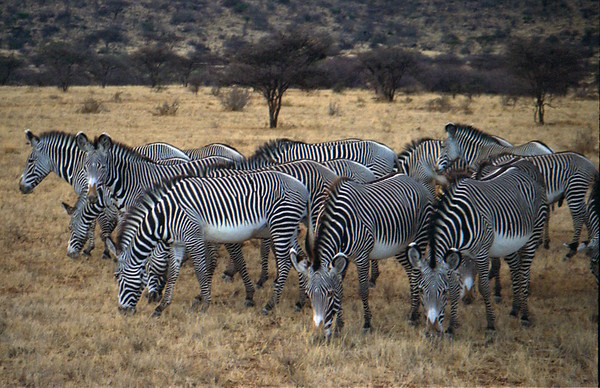
Grévy’s Zebra (Equus grevyi) is the largest of the three species of zebra, and largest living wild equid in general. Also known as the Imperial Zebra, this strikingly striped zebra can be found in parts of northern Kenya with additional scattered and isolated populations in central Ethiopia.
Grévy’s zebras display narrow, close-set black and white stripes that extend all the way down to their hooves. The stripes on the body end before they reach the all-white belly. Newborn foals have brown and white striping – the brown darkens to black as they age. (images at top via JasePhotos and above via Dan Lundberg)
* Amazing Zebra Fact: Zebra milk is 89% water, 7% lactose, 2.2% fat and 1.6% protein. Their extremely dilute milk helps prevent dehydration in foals while allowing the mother to retain nutrients.
Grant’s Zebra
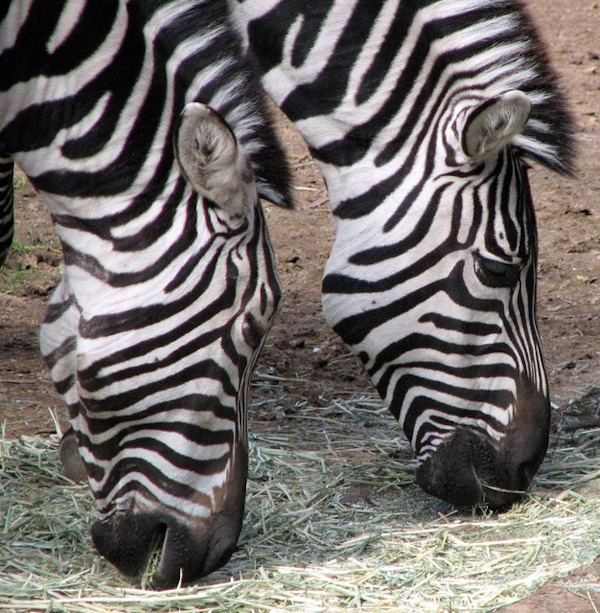
Grant’s Zebra (Equus quagga boehmi) is the smallest of the seven subspecies of the plains zebra. Adults weigh from 485 to 700 pounds (220 to 315 kg), compared to adult Grevy’s zebras, which weigh between 770 and 990 pounds (350 and 450 kg). Grant’s zebra can be found in the grasslands, savannas and open country of southern Sudan and Ethiopia, south to central Angola and eastern South Africa.
Grant’s zebras display wide, broadly-defined stripes that are vertical in front, horizontal on the hind legs, and run diagonally on their flanks. In the northern part of their range these zebras have shorter manes or, in some cases, lack a mane entirely. (image above via Jean)
* Amazing Zebra Fact: Zebras can recognize each other based on stripe patterns, which are unique to each individual. Studies have shown that zebras with more stripes receive additional social attention, such as grooming.
Burchell’s Zebra
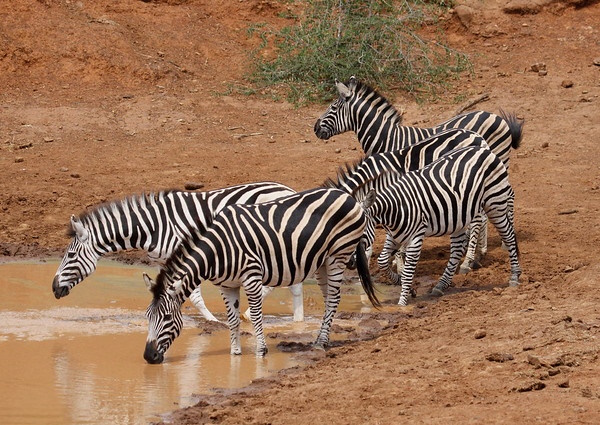
Burchell’s Zebra (Equus quagga burchellii) is a southern subspecies of the plains zebra. Their main distinguishing feature are brownish or buff “shadow stripes” that run between the black stripes from the mid-torso to the rump. Burchell’s zebras form permanent family groups composed of one male stallion who leads a “harem” of 1 to 6 females, plus their young. The females in the harem form strong bonds – if the group’s stallion is killed, the harem will usually remain together until another male can take it over.
Burchell’s Zebras are the only wild equids that are not considered to be endangered but their populations have declined in recent decades due to habitat loss and illegal hunting. (image above via Derek Keats)
* Amazing Zebra Fact: Burchell’s zebra are the only zebra species or subspecies that can be legally farmed for meat. Prized by athletes, the meat is virtually fat-free (0.5gm per 100gm), has higher levels of zinc and vitamin B12, and contains only 148 calories per steak compared to 230 calories in a beef rump steak of equal weight.
Chapman’s Zebra
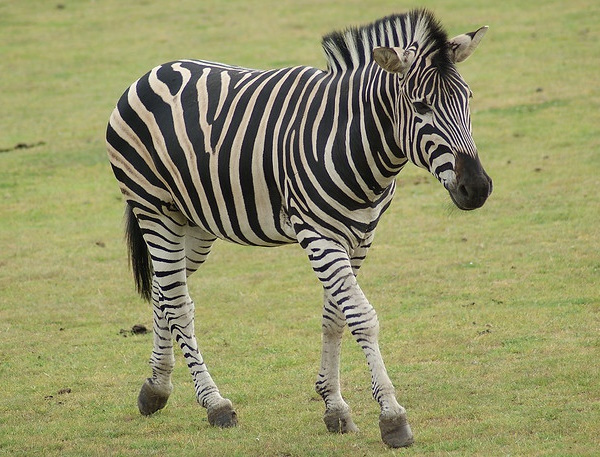
Chapman’s Zebra (Equus quagga chapmani) is a subspecies of the plains zebra. These average-sized zebras can be found in the north-east South African savannah, eastern regions of Botswana, the Caprivi Strip in northern Namibia, and parts of southern Angola. Chapman’s zebras are not considered to be threatened, although their population has declined by roughly 25% in recent years as a direct result of human activity.
Chapman’s zebras differ from other zebras in several respects, mainly in that the brown stripes they are born with don’t always darken into black stripes. In addition, their stripes tend to continue down past their knees where they are both thinner and more numerous. (image above via Richard Allen)
* Amazing Zebra Fact: All zebras may look basically alike but they differ markedly on a genetic basis: Grevy’s zebra has 46 chromosomes; plains zebras have 44 chromosomes, and mountain zebras have 32 chromosomes.
Think zebras live in concrete jungles? Check out Eclectic Avenue: 10 Weird Animal Crossing Signs!
